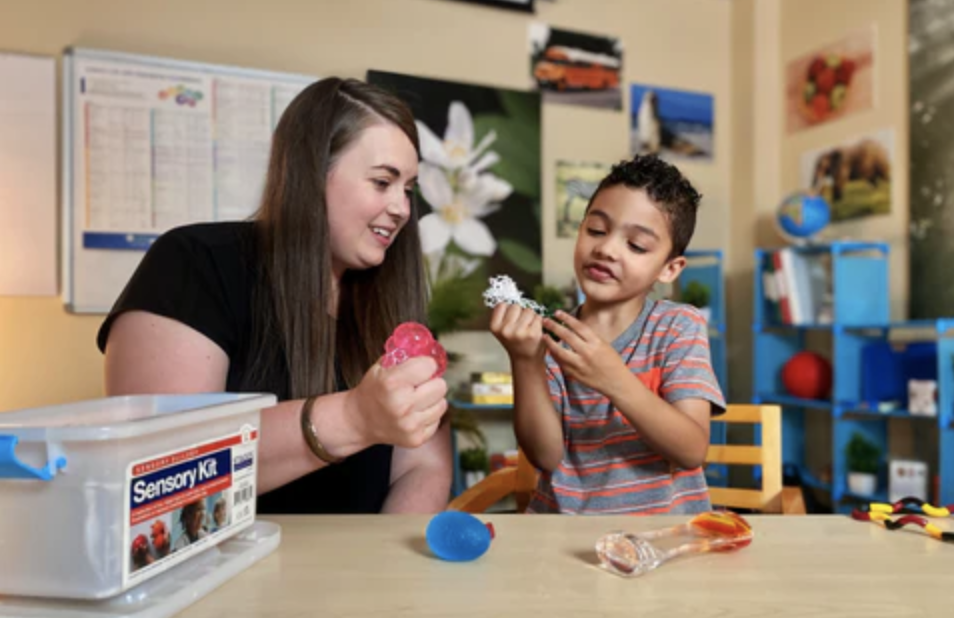Strengthening the Student-Teacher Relationship as a Foundation for Positive Behavior
This article is the fifth in our series on Key Root Causes of Disruptive Classroom Behaviors . . . and How to Help
The relationship between students and teachers is at the core of a successful learning environment. Indeed, the Journal of School Psychology reports that strong teacher-student relationships are associated with lower levels of behavioral problems and higher levels of academic engagement (Murray & Greenberg, 2001). A strong, positive student-teacher relationship can significantly influence a student's behavior, engagement, and overall success in the classroom. When students feel understood, supported, and valued by their teachers, they are more likely to exhibit positive behaviors and participate actively in their education.
Building Strong Student-Teacher Relationships for Success
Building and maintaining this relationship is not just important—it is essential. For the relationship to be truly effective, students should associate their teacher with positive feelings. This means that before any formal teaching begins, the teacher should spend time engaging in activities and experiences their student enjoys. This time spent together helps the student feel bonded to the teacher, creating a foundation of trust and comfort.
Establishing Trust, Respect, and Understanding
A strong student-teacher relationship is built on trust, respect, and understanding. For many students, particularly those with special education needs, forming this bond can be challenging. These students may have experienced difficulties in previous educational settings or may struggle with social interactions, making it crucial for teachers to be intentional in building rapport. The foundation of this relationship often begins with the teacher taking the time to get to know each student as an individual, understanding their strengths, interests, and challenges.
The Academic Readiness Intervention System (ARIS) recognizes the importance of this foundational relationship and provides specific guidance to educators on how to establish it effectively. One of the key components of ARIS is the instruction for every educator to start the program with its pairing lesson and preferred reinforcers identification exercise. The pairing lesson is designed to help educators build a positive relationship with their students by associating themselves with positive experiences and preferred activities. This approach not only helps to establish trust but also ensures that the student sees the teacher as a source of positivity and comfort, which is crucial for the student to feel safe and open to learning.
The preferred reinforcers identification exercise is another critical tool in building this relationship. By identifying what motivates each student—whether it's a particular activity, praise, or a tangible reward—teachers can tailor their interactions and reinforcement strategies to meet the individual needs of their students. This personalized approach ensures that students feel recognized and valued, which is key to fostering a positive relationship. We strongly encourage educators to revisit these lessons frequently, especially when a new member joins the education team, to ensure that the relationship remains strong and supportive throughout the school year.
Strengthening the Relationship Over Time
Revisiting the pairing lesson and preferred reinforcers identification is particularly important because student preferences and needs can change over time. Regularly revisiting these exercises allows teachers to adjust their strategies to continue effectively supporting their students. This practice also helps to reaffirm the bond between the student and teacher, ensuring that the relationship remains strong and that the student continues to feel supported.
Teachers can strengthen their relationship with students by consistently showing empathy, patience, and genuine interest in their well-being. Small gestures, such as greeting students warmly each day, listening to their concerns, and celebrating their achievements, can go a long way in building trust and rapport. Creating a classroom environment where students feel safe to express themselves and take risks in their learning is also essential to fostering a strong relationship.
The impact of a strong student-teacher relationship extends beyond behavior management; it influences all aspects of a student's educational experience. Students who feel connected to their teachers are more likely to engage in learning, exhibit resilience in the face of challenges, and develop a positive attitude toward school. For students with special education needs, this relationship can be the key to unlocking their full potential.
The student-teacher relationship is a critical factor in creating a positive and productive classroom environment. By ensuring that students associate their teachers with positive feelings—through play, non-educational activities, and intentional relationship-building — educators can create a strong foundation of trust and support. Following the ARIS guidelines for pairing and preferred reinforcers identification, and by continuously working to strengthen this relationship, teachers can build a foundation of trust and support that promotes positive behavior and academic success. Investing in these relationships is not just beneficial for students; it is essential for creating a thriving and inclusive educational community.
Want More Content Like This?
- Communication Difficulties: The Silent Barrier
- Sensory Processing Issues: Navigating Overwhelming Environments
- Social Skills Deficits: Bridging the Interaction Gap
- Environmental Factors: Crafting Supportive Learning Spaces
- Addressing Executive Functioning Challenges as a Root Cause of Disruptive Behaviors





